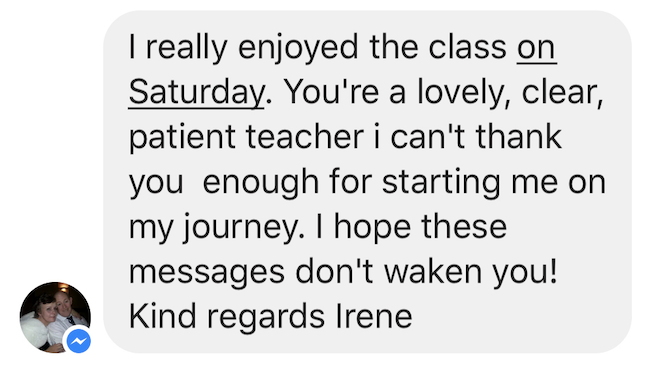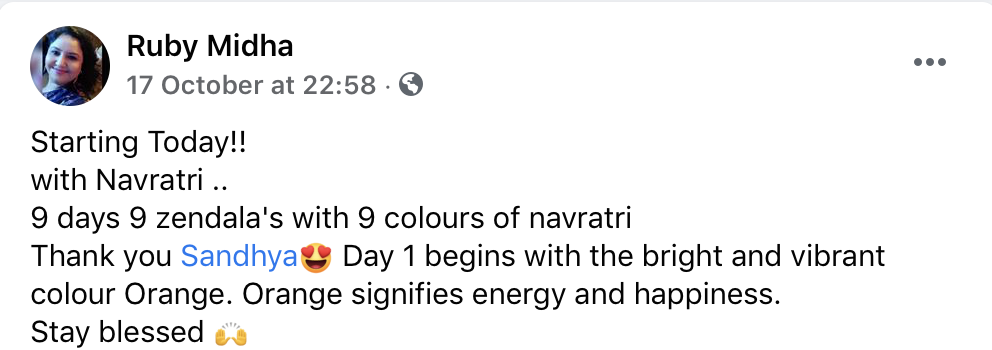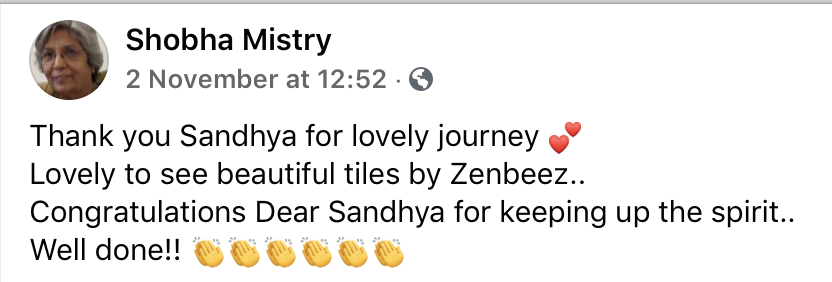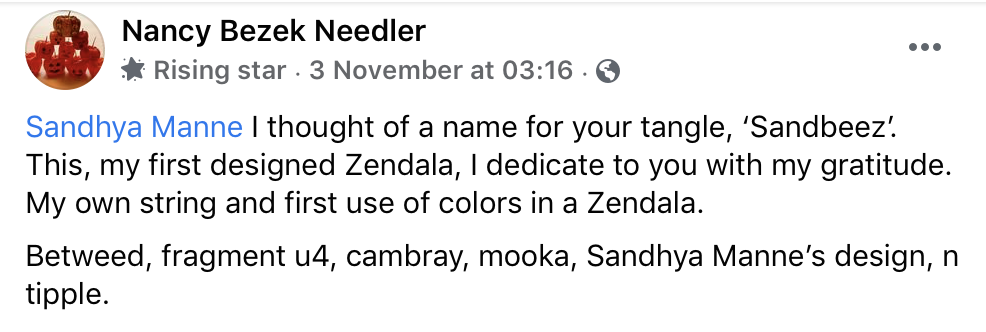HASTA MUDRA
I have always been fascinated by the various hand gestures found in Indian sculptures, and used in Indian classical dance and some in our everyday lives…my general curious search on the internet lead me to some interesting findings…I am sharing a part of it here…
Hasta means hand and Mudra means "seal", "mark", or "gesture”. Hasta Mudras are gestures performed with the hands and are used to convey various feelings, or expressions or meanings. We see this in communication with one another. The hands move, appearing to further communicate what one is speaking. The hands also move reflecting the state of mind even when one isn't speaking. For example, when one is nervous the fingers often fidget or when one is upset the hands can begin to clutch. If anger intensifies the hand becomes a fist that is used to attack.
The opposite of such intense negative emotion are feelings of caring, loving emotions. For example, when we meet one another we either greet with anjali mudra, hands placed together at the heart level (as in Namaste), or with a handshake.
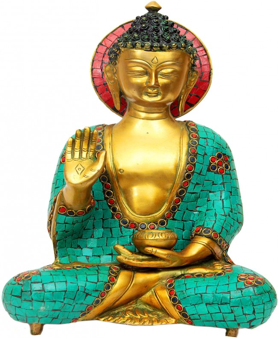
Buddha with Abhaya Mudra
The images and statues of Hindu and Buddhist deities have their hands in a precise gesture. From the hand gesture, one can understand the aspect of the Divine that is being represented. Imagine a deity with the hands clutched. It wouldn't have the same effect as one such as abhaya mudra, the gesture of fearlessness and protection (upward facing open palm).
The use of the Mudras is quite common in the Hindu rituals, Tantric worships, Yoga and also in Classical Indian dances. The Hindu deities are often depicted with their hands making various specific Mudras which are associated with them –but the most common are the twin gestures of dispelling fears and granting boons (downward facing open palm).
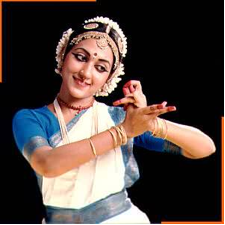
Hasta Mudra in the classical dance
The Natya Shastra is a medieval dance text believed to be written as early as 800AD. It is the earliest known dance text, and generally has formed a basis for most subsequent treatises. It was designed to cover all aspects of medieval drama - dance, music, acting, costumes, stage construction and many other theatrical techniques. As the first known text on dance, it has strongly influenced all the subsequent literature through history, as well as the modern classical dance forms currently active in India.
The Natya Shastra describes 24 mudras. In all the forms of Indian classical dance the mudras are similar, though the names and uses vary. There are 28 root mudras in Bharatanatyam dance, 24 in Kathakali dance and 20 in Odissi. These root mudras are combined in different ways, like with just one hand, or with two hands, arm movements, body and facial expressions to make hundreds of mudras .
Yoga Mudras….
Each finger represents one of the five elements—the thumb is agni (fire), the forefinger is vayu (air), the middle finger is akash (ether), the ring finger is prithvi (earth) and the little finger is jal (water).
The human hand contains about 100,000 nerves and each fingertip has about 3,000 nerve receptors, just under the surface of the skin. In the brain the hand takes up a very large proportion of the brain's cortex, and each area of the hand is linked to a different part of the brain. When we apply pressure to the fingers and hands, we stimulate related brain areas. So we use hasta mudras to activate pressure points, give messages to the body-mind energy system and change brain patterns. Here is a list of some common Hasta Mudra's...
1.Gyan Mudra (Mudra of Knowledge)
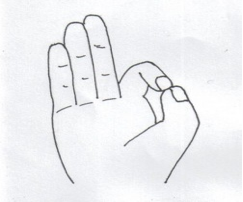
Method: Thumb & index finger should touch each other with the other three fingers stretched out.
Benefits: Improves concentration, helps to increase memory and prevents insomnia. Anger can be controlled and reduces depression.
2.Prithvi Mudra (Mudra of Earth)
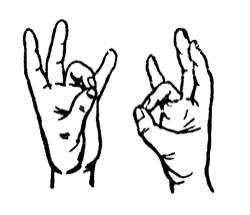
Method: Thumb & the ring finger should touch each other with the other three fingers stretched out.
Benefits: Equilibrium is set between body & mind.
3.Varuna Mudra (Mudra of Water)
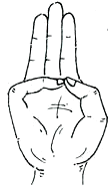
Method: Tip of little finger touches the tip of thumb, with the other three fingers stretched out.
Benefits: It retains clarity in blood by balancing water content in the body
4.Vayu Mudra (Mudra of Air)
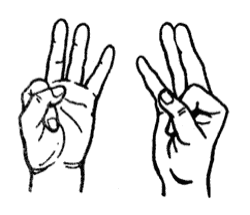
Method: Bend the index finger on the base of the thumb & hold it by thumb keeping the other three fingers straight.
Benefits: It provides relief in Rheumatism, Arthritis, Gout, Parkinson’s disease, Facial Paralysis, Paralysis.
5.Shunya Mudra (Mudra of Emptiness)
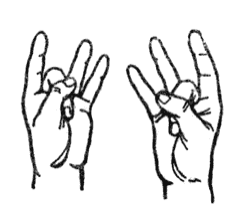
Method: Bend the middle finger and press it with thumb.
Benefits: It relieves an earache and useful for the deaf and mentally challenged, but not for inborn ones.
6.Surya Mudra (Mudra of Sun)
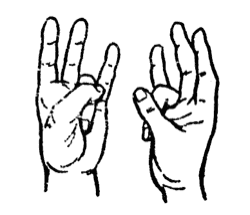
Method: Bend the ring finger & hold with thumb.
Benefits: Generates body heat, improve digestion, reduces cholestrol.
7.Prana Mudra (Mudra of Life)

Method: Bend ring finger and little finger and touch the tip of thumb with their tips keeping the remaining two fingers stretched.
Benefits: It improves immunity, improves the power of eyes and reduces eye related diseases and removes fatigue.
8.Apana Mudra (Mudra of Digestion)
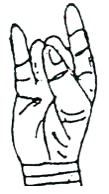
Method: The tips of middle finger and ring finger touch the tip of thumb while the other two fingers are stretched out.
Benefits: It regulates diabetes, cures constipation and piles and helps in excreting the normal waste regularly.
9.Apana Vayu Mudra (Mudra of Heart)
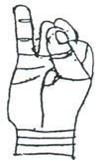
Method: The tips of the middle finger and ring finger touch the tip of thumb, while the index finger touches the base of thumb and little finger stretched out.
Benefits: It strengthens the heart and regularizes palpitation, regulates excretory system and redeems gastric trouble.
10.Linga Mudra (Mudra of Heat)
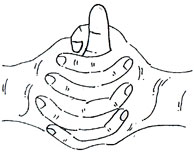
Method: Fingers of both palms should lock each other barring left thumb which should be left perpendicular.
Benefits: Improves immunity, generates heat in the body, burns body fat, provides relief in cold.
11.Dhyana Mudra – Meditation Mudra
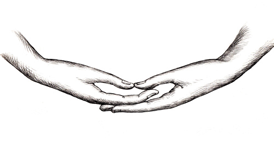
This gesture predates Buddhism, having been used for long by Hindu yogis to develop powers of concentration and healing. In this mudra, the seated Buddha is seen with hands placed on his lap, right hand over left, palms facing upward and fingers stretched in a relaxed pose. The right hand represents enlightenment, while the left is the illusory nature of existence. Alternatively, this positioning of the hands signifies skilful action (or “method”) as arising from a state of inner calm.
Source..
www.wikipedia.com
www.healthandsoul.com
www.thehorizons.com
www.generalism.net
Comments are closed.












